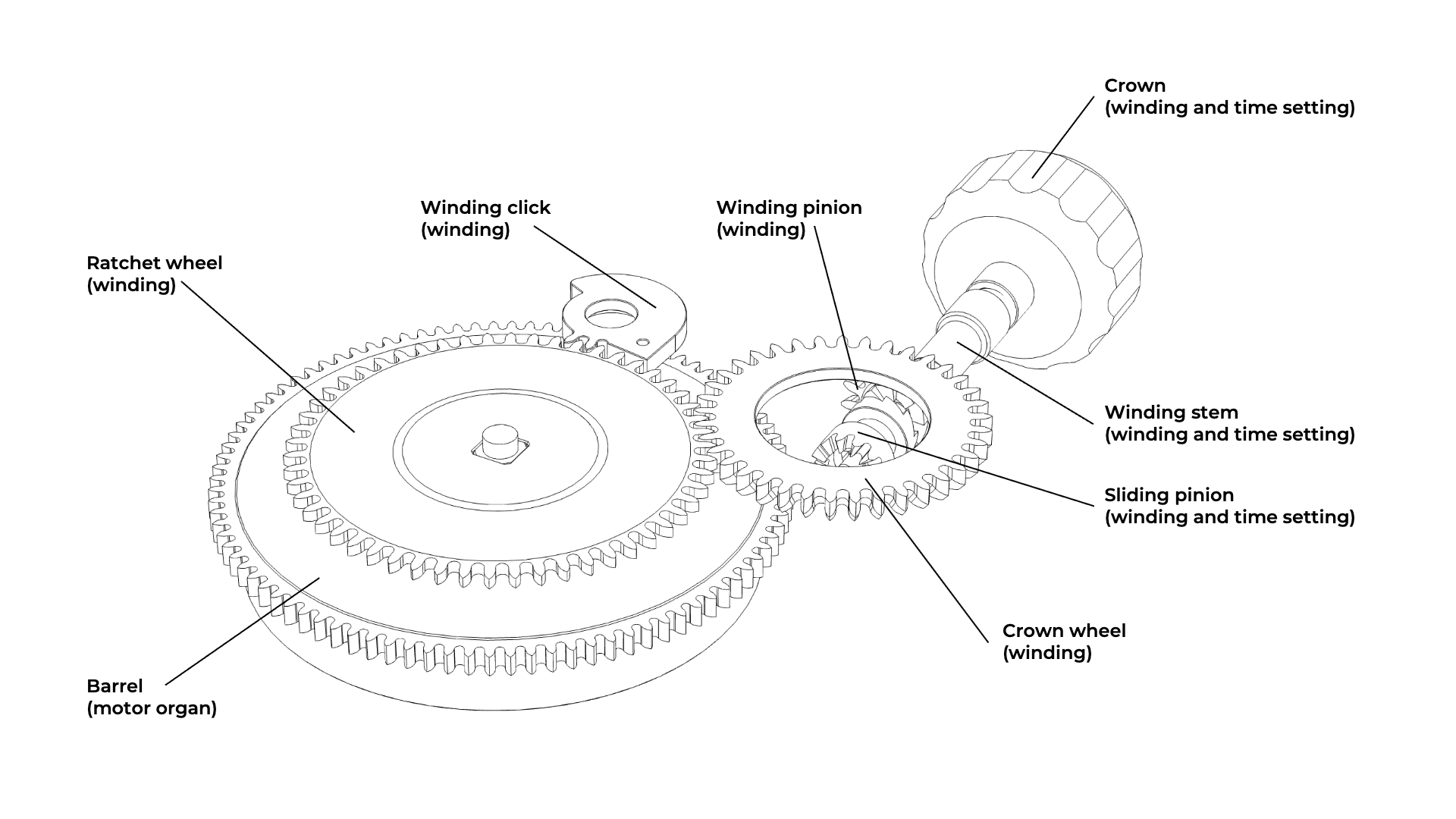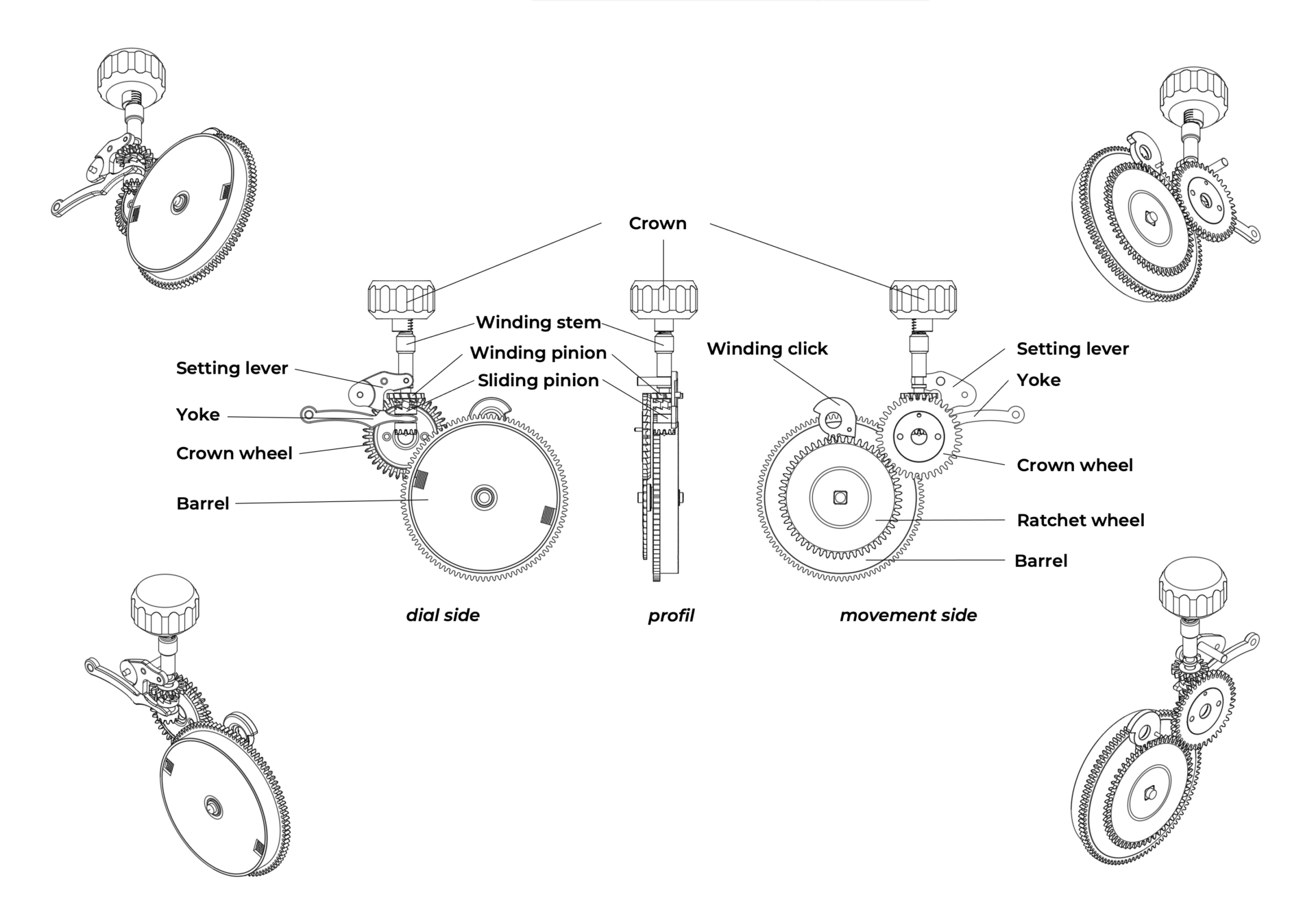A winding mechanism transmits the energy from the rotations of the crown to the motor component responsible for storing and gradually redistributing it to the movement.
The winding mechanism consists of:
The winding mechanism takes its name from the era of weight-driven clocks. The energy that animates this type of clock comes from gravity, which lowers weights attached to their drums by ropes that wind (wind-up) and unwind (normal operation) the clock. When the ropes of the weights are completely unwound on their drums, the clock has no more energy and stops. Energy is restored by winding up the weights, hence the term winding mechanism. After the advent of the first barrels and portable timekeeping, the term remained and refers to any mechanism aimed at restoring energy to a mechanical clock or watch.
Until the mid-19th century, watches were wound using a key. This key engaged directly with the square of the barrel arbor by passing through a hole drilled in the back of the watch.
Although many watchmakers explored the topic, it was the Frenchman Adrien Philippe, who invented an integrated winding mechanism (without a key) in 1842. Its compact size allowed it to be housed under the dial and operated, for the first time, by a crown. Five years later, Antoine Le Coultre patented the first combined winding and time-setting mechanism, coordinated by a lever. It was the inception of the combined winding and time-setting mechanisms, as we know them today.


